Production methods of different types of pipes and application of pipes in industry
Pipes are an integral part of various industries. From home appliance industries to medical equipment and high-tech industries, everyone needs pipes. Pipes are used to transfer fluids and their combinations with solids. In industry and industrial engineering, pipes have unique terms that are named after standard systems. Pipes are considered by a nominal diameter or fixed outer diameter (OD) and thickness (T). But sometimes their inner diameter (ID) may also be a criterion for identification.
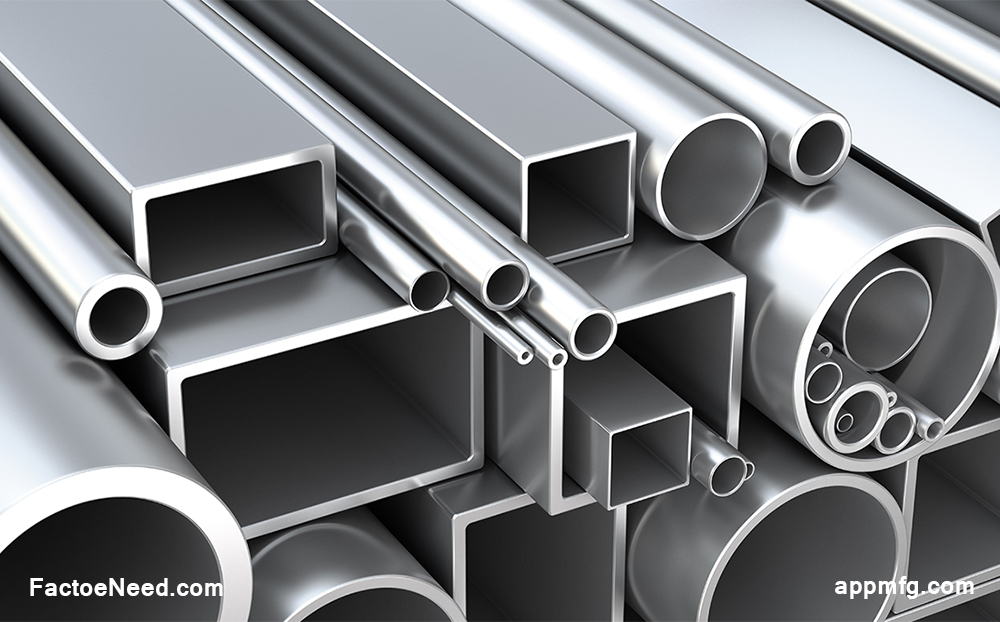
Types of pipes and their applications
While there are many standards for the production and naming of pipes, but often the pipes are produced according to customer needs, dimensions, and surfaces of different sections, which can be oval, circular, and rectangular.
Material of pipes and their application:
As mentioned, pipes are used to transfer fluids. Therefore, they are mostly used in the field of construction and civil piping, production of valves, transmission lines of liquids and gases in long distances, as a cover for columns. Concrete plants for pressure transmission systems, refinery equipment, and refineries. In addition, pipes are used for non-specialized purposes, including the production of fences, scaffolding, support structures, decoration, etc.
In the past, pipes were made of wood, pottery, and lead, but today most pipes are made of metal and are usually made of steel, iron, and other recognized metals, such as black steel (lacquer), carbon steel, stainless steel, Galvanized steel, brass, copper, aluminum and ductile iron
Iron pipes are not suitable for water transmission lines because they react with oxygen in the water and increase its rusting speed.
Aluminum pipes are used when the iron pipes are not compatible with the fluid or the weight component is important. Aluminum is also used for heat transfer pipes in converters and they are widely used due to their low cost, corrosion resistance and solvents, easy formability, and lightness. These pipes are more useful than steel for transporting flammable solutions (such as in-vehicle fuel systems) because they do not produce sparks when exposed to pressure or wear. Also suitable for the production of wheelchairs, walkers and its combination with steel for the production of exhaust pipes. Aluminum pipes can be connected to each other by flammable connections such as brazing and pressure. They can also be connected with the Tig arc welding process.
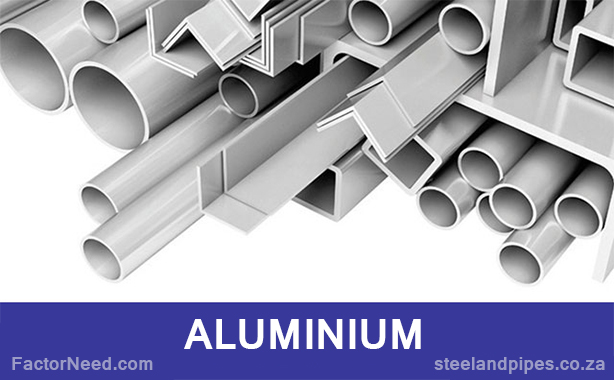
Copper pipes are used in both soft and hard forms. Soft copper pipes can be easily bent. Electric or manual copper pipe bending machines are used for this purpose. These pipes are used as refrigerants in HVAC systems, air conditioners, and splits. Hard and soft copper pipes are connected using flame, compression, and solder joints (with filler). Hard copper pipes are very suitable for water transmission lines. Since they can not be bent easily (they will be cut and bifurcated), the induction heating system should be used to bend them. Otherwise, copper elbows and fittings should be used.
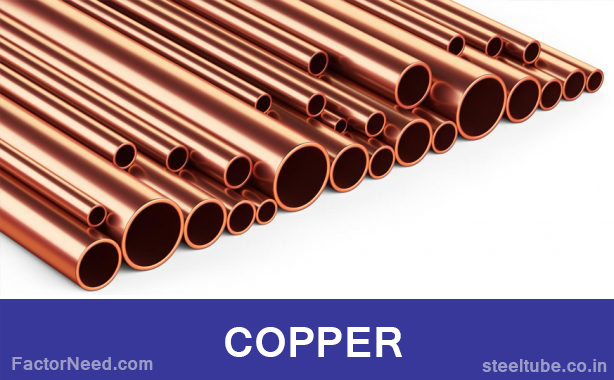
Steel pipes (black iron) are used to transport natural gas or propane fuel and are also suitable for fire extinguishing systems due to their heat resistance. In commercial buildings, steel pipes are used to transfer hot or cold water to heat exchangers or HVAC equipment. Other types of steel pipes include alloy steel pipes (chromium-nickel), which are called stainless steel pipes. Inconel alloy pipes, or nickel-chromium, are highly resistant to oxidation and corrosion and are used in environments exposed to acute corrosion conditions. When heated, these alloys form a passive oxide layer that is thick and stable and protects its bottom surface. Stainless steel and cast iron pipes are used to produce car exhaust manifolds, exhaust pipes, wheelchairs, and structures for large amusement parks, automotive, and military industries.
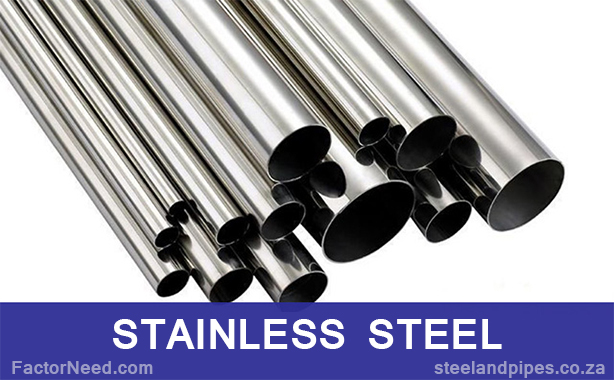
In the past, lead pipes were used to transport drinking water in the water supply system, but today, due to their toxicity, these pipes are almost unused.
Plastic pipes have many uses due to their light weight, high chemical resistance, anti-corrosion properties, and ease of implementation. There are also types of ceramic and bent pipes that we will not discuss in this article.
How to make seamed pipes:
Seamed pipes are usually produced in 3 ways:
1-Casting method:In this method, metals are melted with different alloys and poured into the centrifuge. By rotating the centrifuge and the centrifugal force, the operation is performed and the shape of the tube is maintained until it cools down.
2. Drawing method:In this method, the melted camel bar is pulled on a rod. Finally, a cylindrical shell of ingots is left. In this method, due to the lack of seams along the pipe, the produced pipes are more reliable and stronger. Seamless pipes can withstand more pressure than other existing pipes and are the most used in the industry.
3- Welding method:In this method, the sheets are produced by the process of rolling and welding the seam. The welding process performed is usually ERW resistance welding or EFW fusion welding. Due to excessive heat (due to the welding process), the mechanical properties of the part change, which can be subjected to heat treatment according to the customer's request to eliminate the mechanical properties and defects.
Pipes welded by the weld seam welding process usually have more precise dimensional tolerances and are easier and more cost-effective to manufacture. However, it should be noted that due to their large thickness and material, bending operations should be performed by heating systems such as high-frequency induction systems, but for small diameter seamed pipes can be used pipe bending machines that are suitable for seamed pipes. There are several ways to produce seamed pipes that we will cover.
1. Pipes produced by ERW electric resistance welding process are usually made of steel. In this method, electric current is introduced to the two edges of the tubular sheet, and with the pressure created by the rolling process, the two edges are compressed and due to the electrical resistance of the tubular material, the melting and merging process takes place.
2. In HFI high frequency induction welding method, an induction coil is used to weld pipe seams. HFI welding is generally used for critical purposes, including the production of energy sector pipes, as well as for other applications such as piping and mold injection.
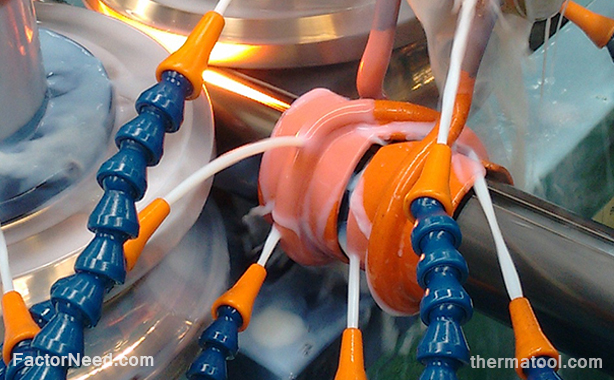
Large diameter pipes (25 cm) are generally produced by ERW, EFW, and sometimes SAW processes.
SAW pipes are produced in two ways: pipes produced by submerged arc welding process along the length of Longitudinal Submerged Arc Welding (LSAW) pipe and pipes produced by spiral submerged arc welding process (SSAW).
Pipes produced by the LSAW process are made of thick steel pipes and are mostly used in the energy industry (oil and gas). Because of their high production costs, they will not be economical for general use.
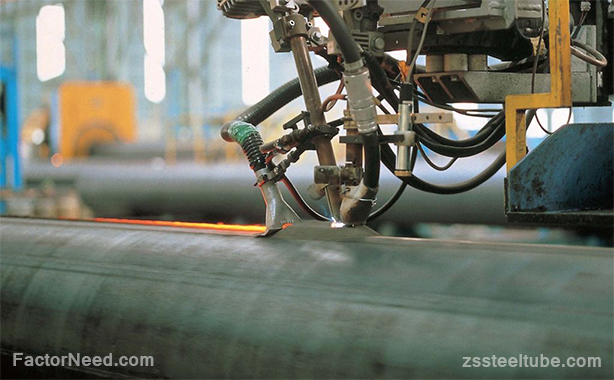
Unlike LSAW pipes, SSAW pipes are made by wrapping a sheet of metal along with each other (along the length of the pipe) and welding it. These pipes are more economical to use than LSAW pipes because they are constantly made of rolled steel sheets and eventually cut to the desired size. However, both of these processes can produce pipes with diameters between 16 and 24 inches, which is not possible to produce seamless pipes.
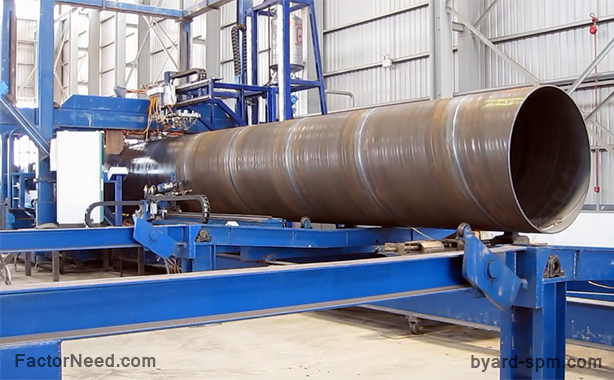
Pipe identification standards:
To identify pipes (material, dimensions, physical properties, etc.) special standards are used, which is a kind of common language between different industries around the world. The most widely used pipe standards are ANSI, API 5L, B36.19M, B36.10M for the United States and non-EU countries, and BS 1600 and BSEN10255 for the EU and the UK. Click for more information.

Cooling systems of industrial machines
When working with industrial machines, especially when the working time is longer or two metals collide directly with each other under pressure It is necessary to use cooling systems. Cooling systems prevent the temperature of parts and tools from rising during operation and prevent them from burning (deforming and reducing strength). The other function of cooling systems is to create lubrication between the two metals and to facilitate chip removal operations. On the other hand, the use of coolers reduces the risks of contact and pressure between the two metals by removing the pleats and chips.
Read More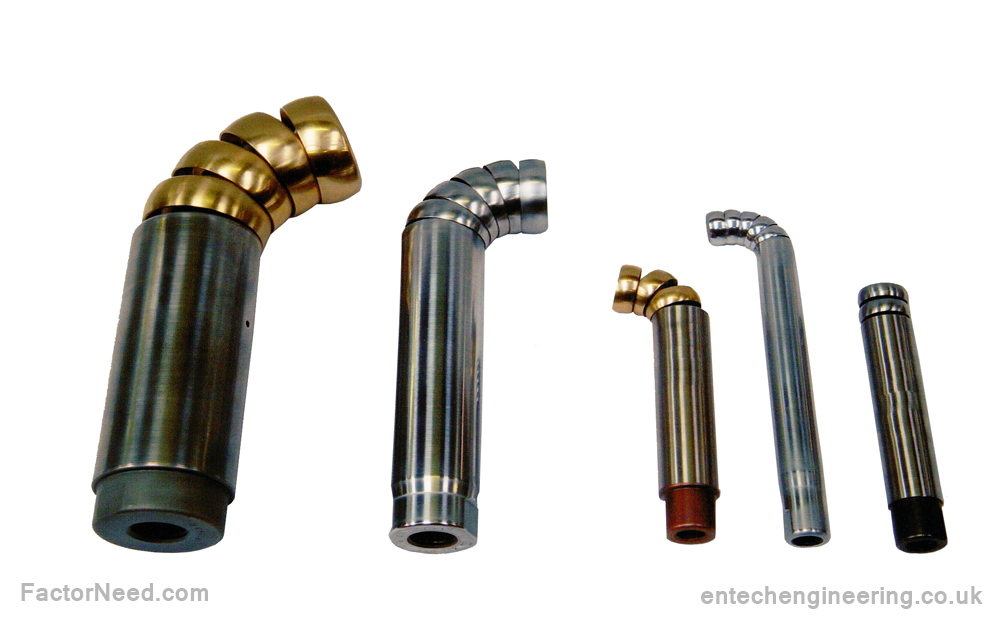
Types of mandrels for bending stainless steel, copper, and titanium pipes
In the past, bent pipes were much less used because there was not much variety in their bending shape and the reason was the inability to create desired bends with different radii. Over time, several machines and tools were developed to bend pipes better and easier, one of which is the mandrel. There are different types of mandrels, each with its own advantages and disadvantages. This article will discuss metal mandrels.
Read More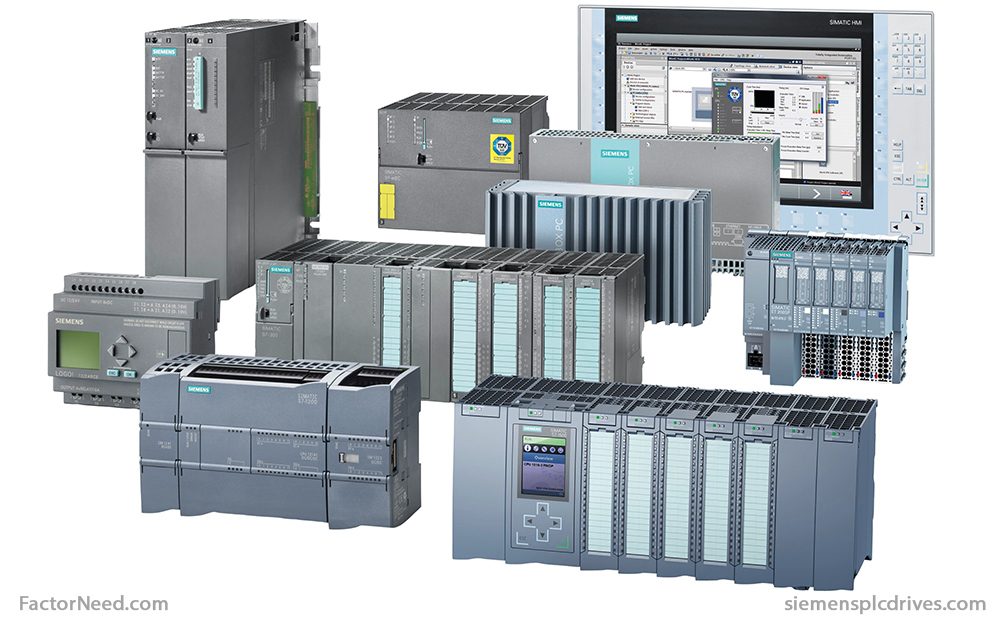
Types of numerical control systems and its applications
The use of PLCs eliminates many of the wirings of older relay control circuits. Other advantages of using PLCs instead of relay circuits include easy installation and programming, short response time, high-speed control system, networking capability, simple testing and troubleshooting, and high reliability of these systems.
Read More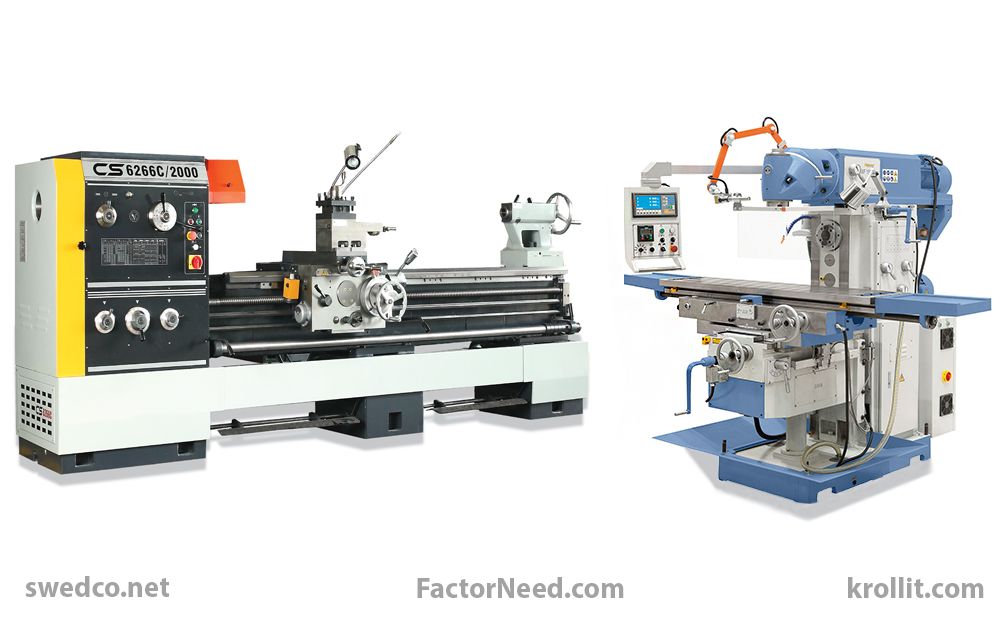
Advantages and disadvantages of universal and special industrial devices
The production of different products requires different machines, each of which is designed and manufactured depending on the type of production. Generally, the machines are produced in two ways, the first is based on the customer's request and in which settings, parts, and equipment are prepared by the buyer's choice or consultation and the machine is created with those facilities. Second, the machine should be produced with a high circulation, which is called the Universal of the Year.
Read More
